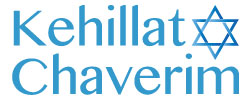A Passover Lesson
Hello friends. Today I would like to share with you something I learned this Pesach and then add some parting thoughts. Before I do this, I would like to acknowledge the distinguished Rabbi of Shaare Tefilla in Dallas, Rabbi Rackovsky, who taught me a Passover lesson and who inspired this paper. Also, I would like to thank my son David for sending me Rabbi Rackovsky’s Sermon Digest which contained all of the sermon’s he would have presented to his congregation throughout Pesach had they been able to gather together.
Rabbi Rackovsky’s sermon for Second day Pesach opens by recalling the Solidarity Movement which was dedicated to convincing Russia to allow Soviet Jews to emigrate to Israel. The opening intrigued me and made me want to read further. After all, a few weeks after I married my beloved wife Terry in 1971, we attended a Solidarity Rally in Chicago. Many prominent Rabbis were involved in the movement including Rabbi Lookstein of Congregation Kehilath Yeshurun in Manhattan. Rabbi Lookstein told the story of a refusenik he befriended whose lifetime ambition was to get out of Russia and make Aliyah. Finally, his dream came true after the Soviet Union eased its position on emigration. This was in large part due to the efforts of the Solidarity Movement. Soon after the emigration, Rabbi Lookstein met up with his friend in Israel. He asked how things were going in Israel. The refusenik responded: “Terrible. I miss Russia. The food in Israel is awful. Cultural life is practically non-existent. Above all, I miss skiing in Russia.”
Rabbi Rackovsky astutely pointed out that the refusenik sounded like our ancestors who left Egypt in the Exodus. They complained: “Why did you take us out of Egypt. So that we may die in the wilderness?” Much like the refusenik, they complained about food: In Egypt we ate fish.” They also complained about Moses and some of them actually tried to overthrow him. I wonder, if it is human nature to constantly complain? The B’nai Yisroel consistently complained despite witnessing one miracle after another. Despite having G-d to protect and sustain them. Despite Mount Sinai.
I never understood Afikomen until it was explained to me by Rabbi Rackovsky in his fantastic Second Day Pesach sermon.
When the B’nai Yisroel left Egypt, they carried with them two items of food. The first item was a piece of matzah. We all undoubtedly recall that our ancestors fled Egypt quickly in their pursuit of freedom. There was no time to bake bread, so they quickly produced unleavened bread; matzah. They wanted to remember their flight to freedom and they wanted future generations to remember it. So, they each carried a little piece of matzah in their knapsacks as a reminder to themselves and their progeny of their road to freedom. But this still doesn’t explain Afikomen. Why is it such a prominent part of the Pesach Seder?
The Seder, you will please note, is divided into twelve orders. Order number eleven is Tzafon, when we eat the Afikomen. It is connected to order number four, Yachatz, when we split the middle matzah into two pieces and set aside one piece for the Afikomen. Why only eat a piece of matzah for the Afikomen rather than a whole matzah? The answer to this question and the question raised in the preceding paragraph lies in the matzah carried out of Egypt by our forbearers. Our Rabbis wanted Afikomen to be a symbol of freedom. How could one better symbolize this than by having a little piece of matzah become such a significant part of the Passover Seder.
But what about the other food item carried by the B’nai Yisroel when they fled Egypt? The second food item was a morsel of Maror. Maror itself certainly plays a major role in the Pesach Seder. It is placed on the Seder plate. It is the eighth order of the Passover Seder. Rabban Gamliel declares it to be one of the three pillars of the Seder. But why don’t we set aside a little piece of maror and make it a separate order of the Seder like Afikomen?
As you are probably already aware, maror symbolizes the bitterness of slavery. To remember their bitter existence as slaves, the B’nai Yisroel set aside a morsel of maror in their knapsacks as they fled Egypt. Like the matzah fragment that they carried, they carried the bit of maror as a reminder to themselves and their progeny of the bitterness they experienced during slavery. Unfortunately, the bitterness was not left in Egypt. As previously alluded to, the B’nai Yisroel maintained a negative attitude throughout their journey to freedom. Our Rabbis, in their infinite wisdom, wanted to accentuate the positive. Hence, the Afikomen, a little piece of matzah, is used to symbolize the journey to freedom. They did not, however, want to glorify negativity. Thus, we forego making a remnant of maror a separate part of the Seder.
Our parents and/or grandparents are remembered as being part of the Great Generation for the sacrifices they made at home and abroad to further the war effort during World War Two. How do we wish to be remembered? As the generation that incessantly complained about the pandemic? Or as the generation which courageously carried on in the face of adversity?

